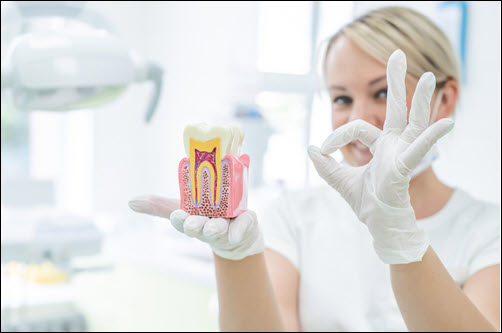Root Canals: What to Expect Before, During, and After the Procedure
Root canals are a common dental procedure used to treat and save a tooth that is infected or severely decayed. The thought of a root canal can cause anxiety for many people. Understanding the process and knowing what to expect can help alleviate fears. Here’s a comprehensive guide to what you can expect before, during, and after a root canal procedure.
Before the Procedure
-
- Consultation and Diagnosis: Before a root canal is performed, your dentist will conduct a thorough examination. This may include X-rays to assess the extent of the infection and determine the best course of action. Your dentist will explain the procedure, answer any questions you have, and discuss the expected outcome. It’s important to disclose any medical conditions or medications you are taking, as this information can influence treatment planning.
- Pre-Procedure Instructions: Your dentist may provide specific instructions to follow before the procedure. For example, you may need to avoid certain medications or just eat a light meal. If you experience anxiety about dental procedures, discuss this with your dentist. They may offer sedation options to help you relax.
 During the Procedure
During the Procedure
-
- Anesthesia and Preparation: A root canal procedure typically begins with the administration of local anesthesia to numb the affected area. This ensures you remain comfortable and pain-free. Once the anesthesia takes effect, the dentist will place a rubber dam around the tooth. This keeps it dry and free of saliva during the procedure.
- Cleaning and Filling the Canals: The dentist will create a small opening in the crown of the tooth to access the pulp chamber and root canals. Using specialized instruments, they will remove the infected or damaged pulp. Then they will clean the inside of the tooth and shape the root canals. The cleaned canals are then filled with a biocompatible material called gutta-percha to seal the space and prevent further infection.
- Sealing the Tooth: After the root canal is completed, the dentist will seal the tooth with a temporary or permanent filling. In some cases, a crown may be placed over the tooth. This provides additional strength and protection, especially if the tooth is located in the back of the mouth or has significant structural damage.
After the Procedure
-
- Recovery and Care: After a root canal, it is normal to experience some mild discomfort or sensitivity. Over-the-counter pain relievers, such as ibuprofen, can help manage any discomfort. Your dentist may provide specific post-procedure instructions, such as avoiding chewing on the treated tooth until a permanent restoration is placed.
- Follow-Up Visits: It is important to attend follow-up appointments with your dentist to ensure the tooth is healing properly and to place any necessary permanent restorations. Regular dental check-ups and good oral hygiene practices are essential for maintaining the health and longevity of the treated tooth.
Root canals are a safe and effective way to treat infected or damaged teeth, preserving your natural smile and preventing the need for extraction. By understanding what to expect before, during, and after the procedure, you can approach your root canal with confidence and ease. If you experience any symptoms of a tooth infection or have concerns about a root canal, consult your dentist to discuss the best treatment options for your dental health.

